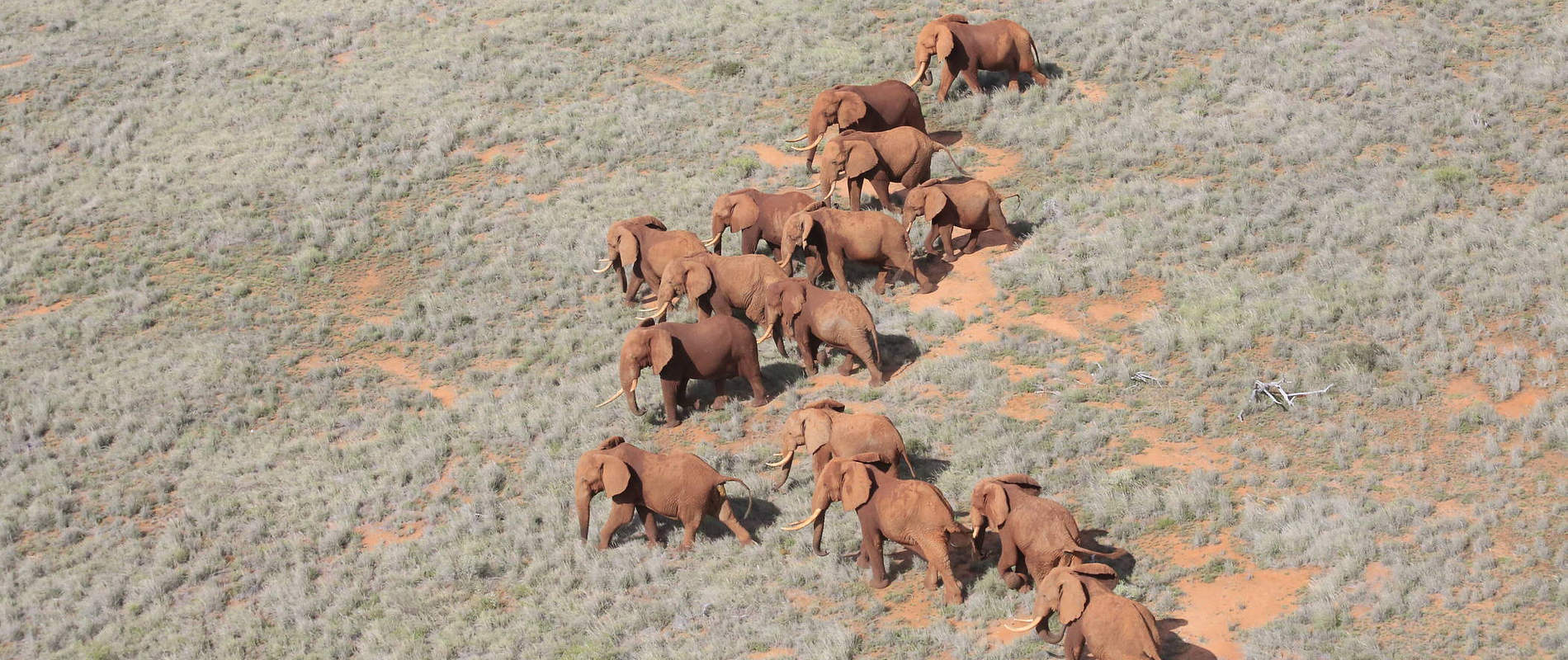The DSWT Aerial Unit has flown many hours this month keeping a watchful eye in the sky
The DSWT Aerial Unit has flown many hours this month keeping a watchful eye in the sky. The Unit has focused its efforts within Tsavo East National Park with a couple of routine patrols over Tsavo West and Amboseli National Parks as well as patrolling in Lamu Country.
Following the driest month of the year, the rains arrived late in Tsavo with only a few small showers at first. Finally, some real storms rolled in mid-month and changed the parched land in an instant. The Athi/Galana River has been in full flow due to heavier rains inland, whilst the Tiva River, which normally only flows in December, has been in full flood, with the first water appearing on November 4th. With the onset of the rains the Tsavo bush has become impenetrably thick, and the roads have become extremely wet and muddy, which has been challenging for our ground patrols when trying to get to where they need to be to operate effectively.
At this time of year with waterholes full and water no longer a challenge, reports of armed poachers coming into Tsavo East from the eastern boundary have meant that anti-poaching efforts have been increased. The DSWT helicopter has been extremely active in assisting Kenya Wildlife Service rangers on the ground with patrols along this sensitive boundary of Tsavo East where the rains have made it difficult for the KWS vehicles to access the area. In total six tusks were sighted from the air and recovered during November. Two sets were recovered by the helicopter and one pair was recovered by one of the DSWT ground teams.
You can read more about the activities of the Aerial Unit during November, including managing crop-raiding elephants and conducting veterinary interventions, in our monthly report:
